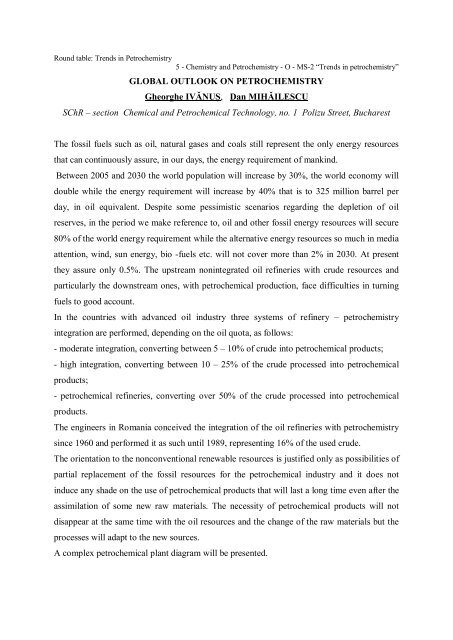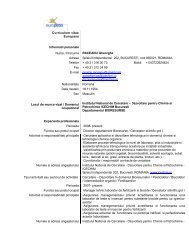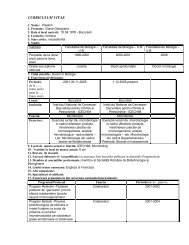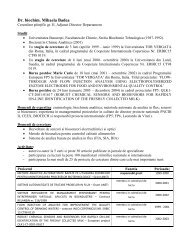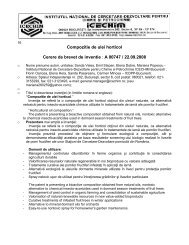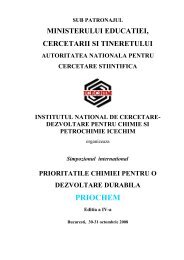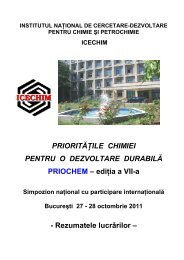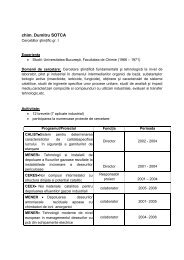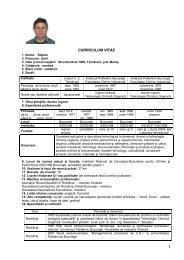INSTITUTUL NAÅ¢IONAL DE CERCETARE-DEZVOLTARE - ICECHIM
INSTITUTUL NAÅ¢IONAL DE CERCETARE-DEZVOLTARE - ICECHIM
INSTITUTUL NAÅ¢IONAL DE CERCETARE-DEZVOLTARE - ICECHIM
- No tags were found...
Create successful ePaper yourself
Turn your PDF publications into a flip-book with our unique Google optimized e-Paper software.
Round table: Trends in Petrochemistry5 - Chemistry and Petrochemistry - O - MS-2 “Trends in petrochemistry”GLOBAL OUTLOOK ON PETROCHEMISTRYGheorghe IVĂNUŞ, Dan MIHĂILESCUSChR – section Chemical and Petrochemical Technology, no. 1 Polizu Street, BucharestThe fossil fuels such as oil, natural gases and coals still represent the only energy resourcesthat can continuously assure, in our days, the energy requirement of mankind.Between 2005 and 2030 the world population will increase by 30%, the world economy willdouble while the energy requirement will increase by 40% that is to 325 million barrel perday, in oil equivalent. Despite some pessimistic scenarios regarding the depletion of oilreserves, in the period we make reference to, oil and other fossil energy resources will secure80% of the world energy requirement while the alternative energy resources so much in mediaattention, wind, sun energy, bio -fuels etc. will not cover more than 2% in 2030. At presentthey assure only 0.5%. The upstream nonintegrated oil refineries with crude resources andparticularly the downstream ones, with petrochemical production, face difficulties in turningfuels to good account.In the countries with advanced oil industry three systems of refinery – petrochemistryintegration are performed, depending on the oil quota, as follows:- moderate integration, converting between 5 – 10% of crude into petrochemical products;- high integration, converting between 10 – 25% of the crude processed into petrochemicalproducts;- petrochemical refineries, converting over 50% of the crude processed into petrochemicalproducts.The engineers in Romania conceived the integration of the oil refineries with petrochemistrysince 1960 and performed it as such until 1989, representing 16% of the used crude.The orientation to the nonconventional renewable resources is justified only as possibilities ofpartial replacement of the fossil resources for the petrochemical industry and it does notinduce any shade on the use of petrochemical products that will last a long time even after theassimilation of some new raw materials. The necessity of petrochemical products will notdisappear at the same time with the oil resources and the change of the raw materials but theprocesses will adapt to the new sources.A complex petrochemical plant diagram will be presented.


